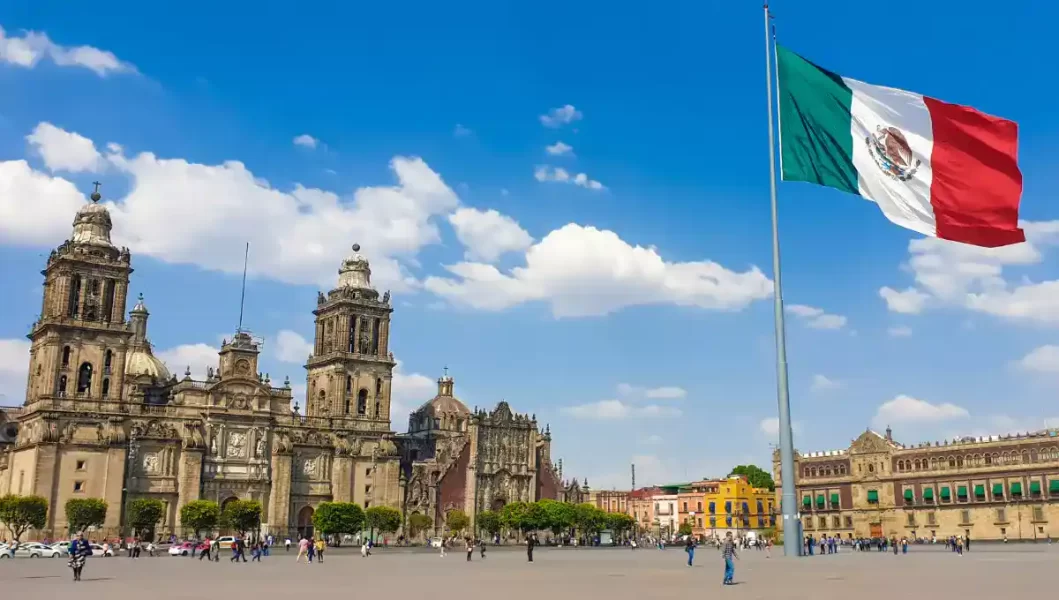Are cenotes safe to visit? Yes, cenotes are generally safe to visit. However, it’s essential to follow safety guidelines and adhere to any posted warnings to ensure a safe and enjoyable experience.
Mexico is famous for its cenotes, natural sinkholes filled with freshwater that form beneath the earth’s surface. These wonders of nature are not only stunning to behold but also offer a serene swimming experience.
Visiting a cenote in Mexico is both an adventure and a popular tourist attraction. Some cenotes are tucked away amidst lush vegetation, while others are surrounded by ancient Mayan ruins.
The Yucatan Peninsula is home to thousands of these breathtaking underground pools, thanks to its unique geological history and environmental conditions. This makes it one of the most incredible places in Mexico to explore cenotes.
- 🤷♂️ What is a Cenote?
- 🤔 How to Get to the Cenotes?
- 📝 Here is the List of 11 Best Cenotes in Mexico For Travellers To Enjoy The Underwater Wild Experience
- 🧐 Things to Bring to a Cenote [Traveller Guide]
- 🙋🏻♀️ FAQs About Best Cenotes in Mexico
- Q. What should I wear to visit a cenote?
- Q. Can I swim in a cenote?
- Q. Can I take pictures at Cenotes?
- Q. What is the most famous cenote in Mexico?
- Q. What is the most picturesque cenote?
- Q. Is it safe to swim in Cenotes Mexico?
- Q. What is the clearest cenote?
- Q. Do cenotes have marine life?
- Q. Are cenotes suitable for beginners?
- Q. Can I visit cenotes year-round?
- Q. Are cenotes crowded with tourists?
- 😇 Conclusion
- 🗨️ Let me know in the comments which cenote in Mexico you think is the best!
 🤷♂️ What is a Cenote?
🤷♂️ What is a Cenote?
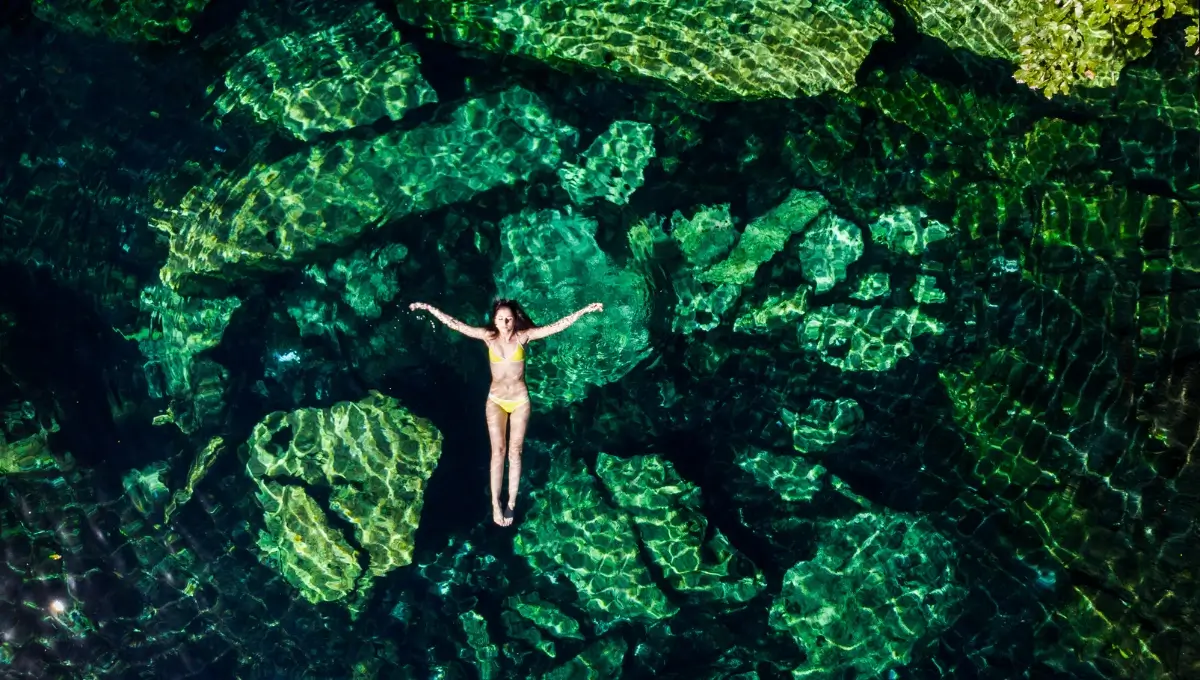
Cenotes are natural sinkholes formed by the collapse of limestone bedrock, revealing underground rivers and caves.
🤔 How to Get to the Cenotes?
- Yucatan Peninsula:
- Home to the majority of cenotes due to geological circumstances.
- Over 6,000 cenotes were identified.
- Many more are possibly hidden in forests.
- Accessibility:
- Many stunning cenotes near Cancun, popular tourist spots, cities, and Mayan archaeological sites like Chichen Itza.
- Proximity to towns or archaeological sites allows access via colectivos or shared taxis.
- Renting a car is recommended for easier access due to many cenotes being off the beaten path.
- Rentalcars.com offers a platform to compare vehicle rental options for convenience and pricing.
📝 Here is the List of 11 Best Cenotes in Mexico For Travellers To Enjoy The Underwater Wild Experience
Check out our list of the best cenotes in Mexico if you’re planning a trip to the Yucatan soon and want to spend a few hours or a day in a cenote
1. Cenote Eden
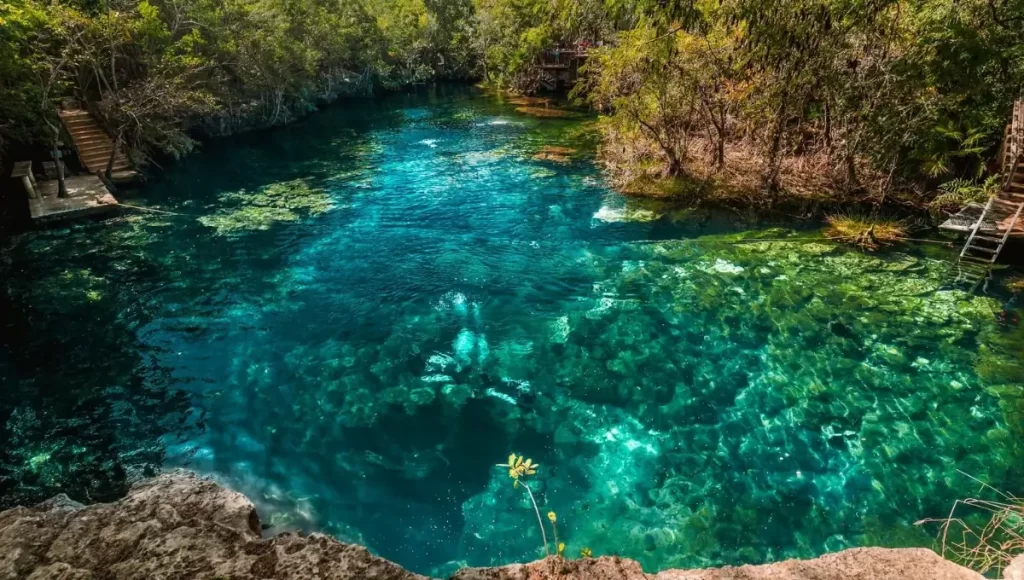
Popular places for swimming, snorkeling, and scuba diving include Cenote Eden. The cenote’s open water part has a bottom of tiny stones and algae that makes it resemble a sizable lake. This cenote is also enjoyable for novice divers.
The halocline, or boundary between freshwater and saltwater, is observable at shallow depths. The contrast between the warm ocean and the cold freshwater is Cenote Eden’s most fantastic feature.
2. Gran Cenote

In the vicinity of Tulum, the Gran Cenote is frequently crowded. Nearly a million people visit it annually, making it one of the most popular in Mexico. You can enter a cenote ideal for swimming by following a rope into the cave.
Stalagmites adhere to the roof of the cenote’s lower half, which is submerged in water. You’ll never see a more stunning cenote than this one. Its crystal-clear water is home to several mineral formations and numerous fish and turtles.
3. Cenote Calavera
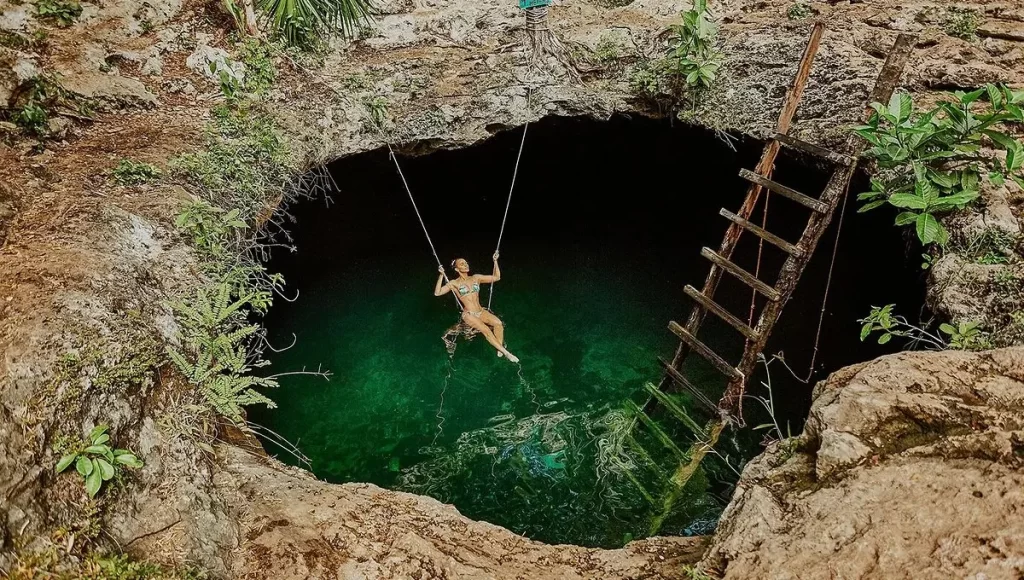
Only three discrete ground entrances—one enormous and two smaller—allow access to this deep cavern. Limestone erosion led to the formation of this “hidden” cenote. If you’re feeling particularly daring, you can jump through the holes even if there is a ladder from the spot.
Swim under the cenote cave walls after you’re in the water to explore the area. This small, constrained pool can accommodate a maximum of six swimmers at once. For the best opportunity to swim calmly, arrive when the pool opens.
4. Cenote Cristalino
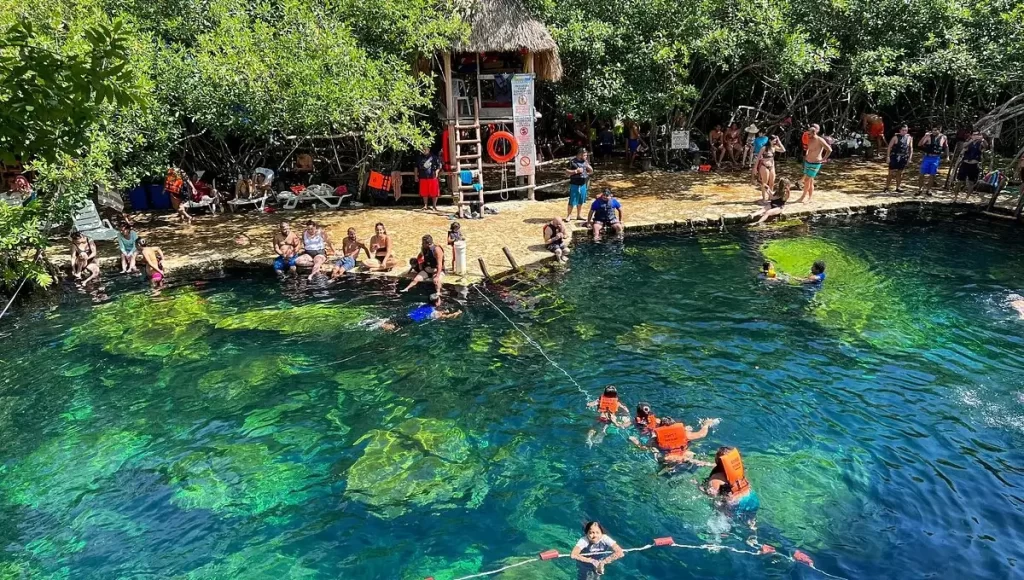
In Playa del Carmen, the Cenote Cristalino is a popular location for swimming, snorkeling, and scuba diving. Sun loungers and hammock rentals are also accessible close by. A beautiful, green forest on the surface encircles the Cenote Cristalino.
Paddling around in the shallow, open water is a great way to spend the day here. The deeper portions of the cenote also have a few cliff leaps for the daredevils.
5. Cenote Angelita
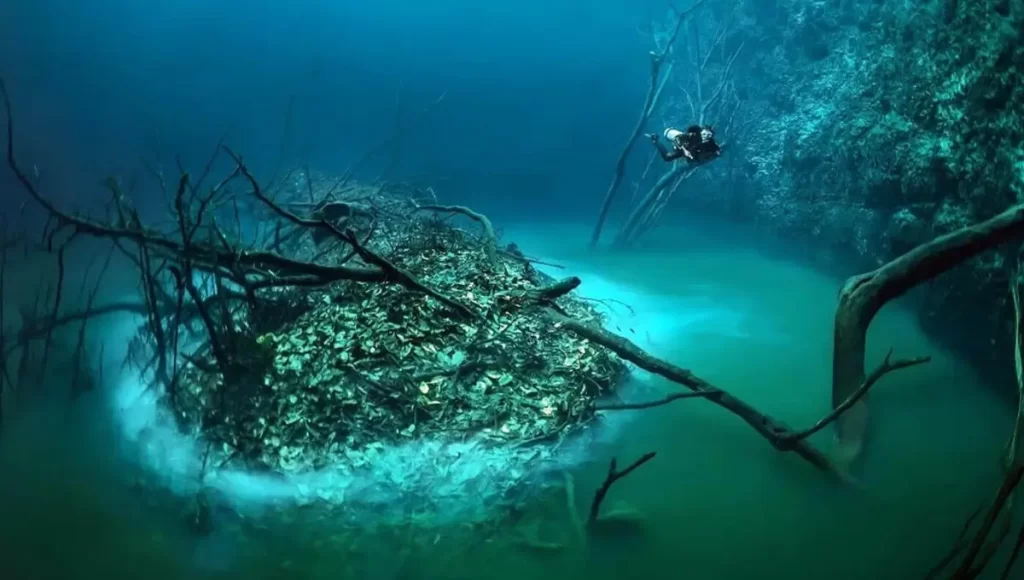
A diver’s heaven, Cenote Angelita. Due to its depth, it is less suitable for swimming and snorkeling. You can dive in a round, open cenote, a veritable sanctuary for divers. The halocline on this regular deep dive is 27 meters high.
A beautiful cloud of hydrogen sulfate surrounds it. This cloud causes trees and branches to appear, creating a lovely scene and a spectacular dive.
6. Cenote Azul
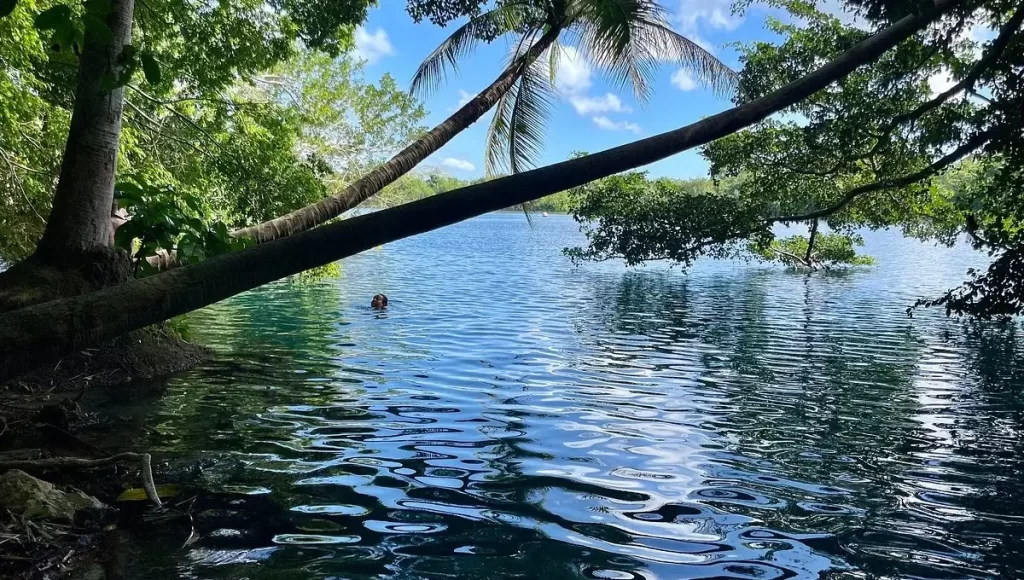
The Cenote Azul is a must-see on your upcoming trip to Yucatan. This is huge, and you can swim in several sorts of pools.
Tulum and Playa del Carmen are nearby locations that can be reached by automobile in under 30 minutes. Rocks and abundant tropical vegetation dominate the area.
There is a 10-foot platform from which anyone feeling very courageous can jump. People can also lounge in the sun or swim in the pool to unwind.
7. Cenote Chaak Tun
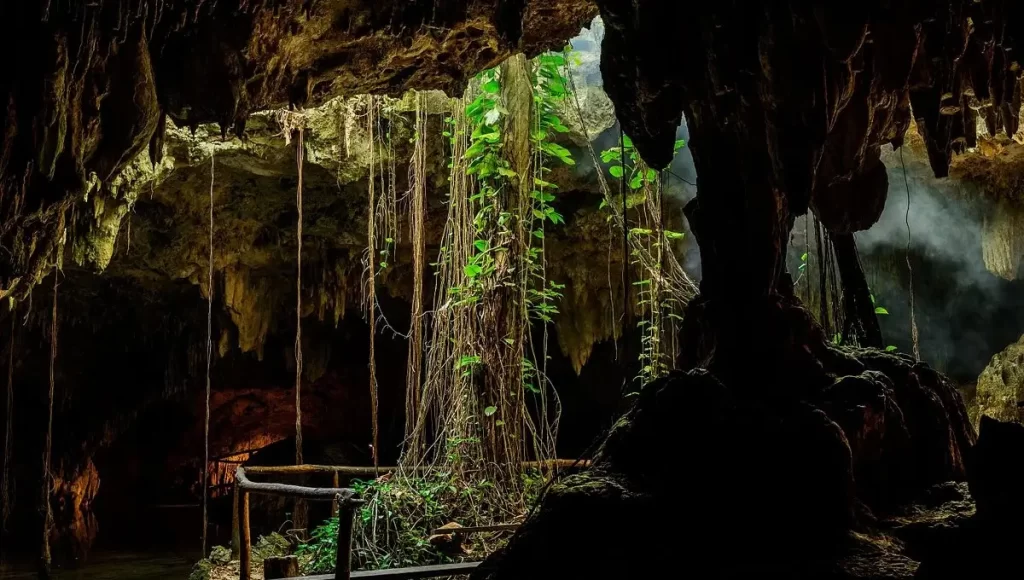
To visit a large Mexican cenote, you must go to the Cenote Chaak Tun. Unlike the other cenotes near Playa del Carmen, which are open, this one is underground.
The largest cave at Cheek Tun is lit only by a tiny hole in the limestone ceiling, creating an eerie confidential atmosphere.
The two main caves are connected, making it a great cenote to explore. Since a life jacket and hard hat are provided at the entrance, adventure seekers must try this.
8. Cenote Dos Ojos
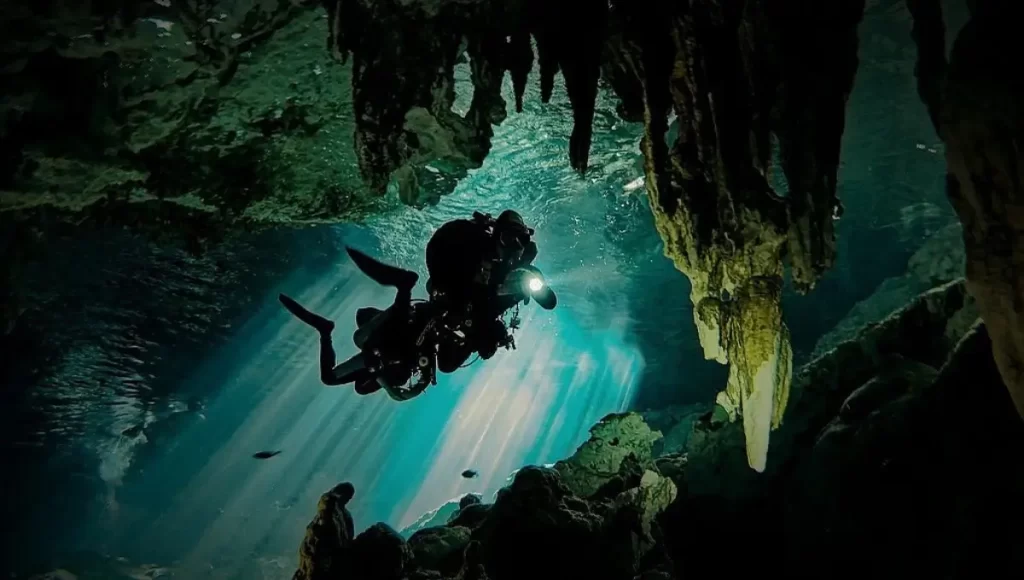
Among the cenotes of the Riviera Maya, this is the most impressive and well-known cenote in the Yucatan. It was one of the first cenotes to be discovered and got its name from the Latin for “two eyes.”
Cenote Dos Ojos is well-liked by swimmers and divers due to its breathtaking rock formations. One of the top 10 longest and deepest underwater cave systems in the world, it is 38 miles long and 396 feet deep.
9. Cenote Dreamgate
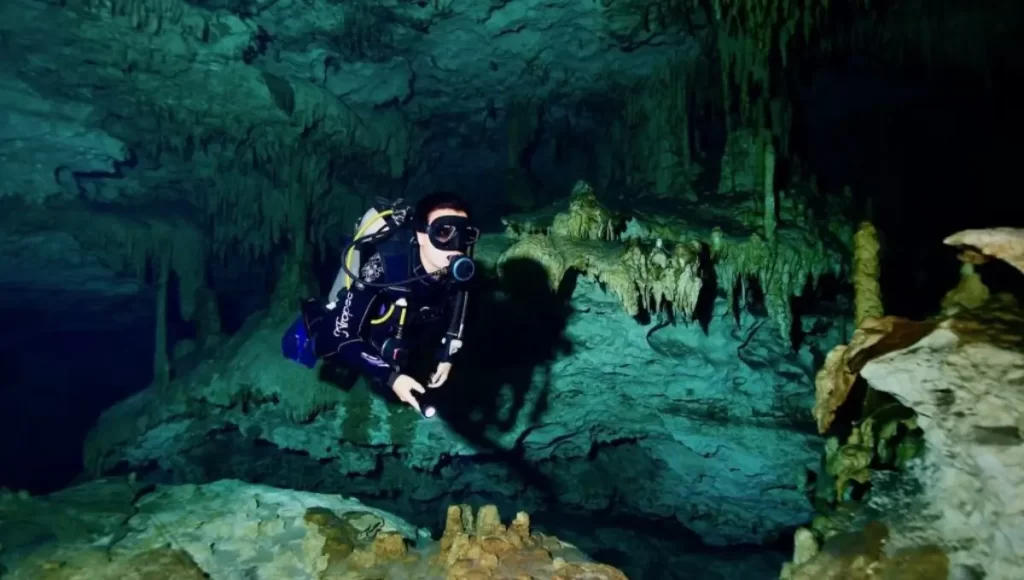
A divers’ paradise is Cenote Dreamgate. This cenote provides access to its underwater delights if you enjoy swimming and snorkeling.
Since this cenote isn’t very deep, having enough buoyancy is crucial to prevent objects from spinning up on the water’s surface.
When you go, move carefully through the system of tunnels to give yourself plenty of time to admire the magnificent formations in this natural wonder.
10. El Pit
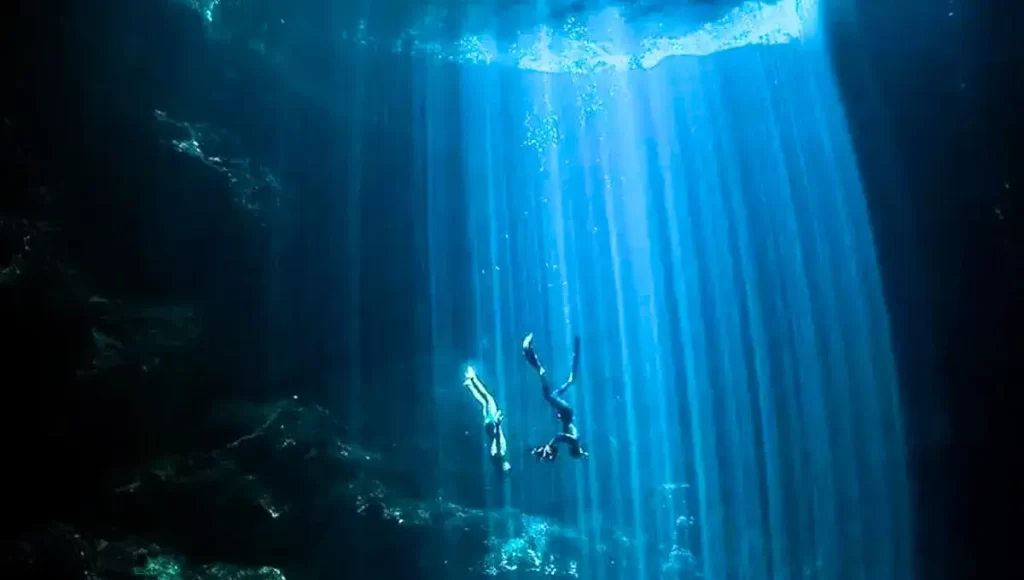
This cenote’s approximate 30-meter (100-foot) depth makes it perfect for scuba diving. El Pit also makes every effort to maximize natural light. The numerous distinctive characteristics of this cenote offer fantastic opportunities for underwater photography.
This cenote might not be the best choice for you, though, if you’re not planning on going scuba diving. Divers will be able to see a halocline and a hydrogen sulfide cloud, which are arguably more exciting than the meager marine life in El Pit.
11. Cenote Ik-Kil
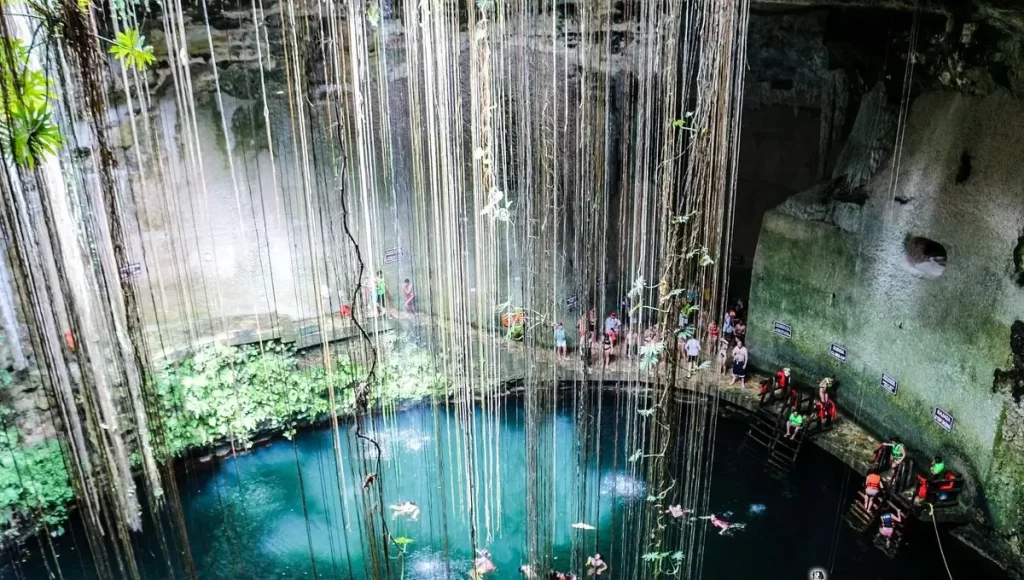
Even though it takes some effort to get here, Cenote Ik-Kil is worth the trip. In addition to being stunning, it’s also a famous cenote in the Yucatan due to its proximity to Chichen Itza.
The water in this cenote is robust and pure blue, more profound and more significant than other cenotes.
Water cascades down the walls while vines and roots dangle over the water’s surface, making the location incredibly picturesque. Additionally, Mayan music will be playing in the background to enhance the view.
🧐 Things to Bring to a Cenote [Traveller Guide]
- Biodegradable Sunscreen: The sun is intense and hot in southern Mexico, so pack sunscreen to prevent sunburn. By bringing biodegradable sunscreen with you on your journey, you can contribute to environmental protection.
- Water Shoes: Cenotes frequently have uneven walkways leading down to the water, so you might want to think about investing in a pair of high-quality water shoes to protect your feet. They can be utilized on the Cancun beaches as well!
- Waterproof dry bag: Nothing compares to a dry bag when you’re close to water! Bring a dry bag to protect your possessions from splashes, especially electronics.
- Quick-Dry Towel: Quick-dry towels will quickly dry you off and are highly portable and easy to carry. Additionally, when you put the rest of your possessions back in your bag at the end of the day, they won’t be drenched with water.
- GoPro: If you want to record some fantastic action photos or videos while you’re out adventuring, a GoPro is a necessity because cenotes are highly photogenic.
🙋🏻♀️ FAQs About Best Cenotes in Mexico
When it comes to cenotes in Mexico, there’s a lot to ponder. But don’t worry—I’ve got you covered! Below, I’ll answer some of the most common questions to help you plan your cenote adventure.
Q. What should I wear to visit a cenote?
A. It’s recommended to wear comfortable swimwear and water shoes when visiting a cenote in Mexico to ensure a pleasant and safe experience.
Q. Can I swim in a cenote?
A. Yes, cenotes are ideal for swimming, snorkeling, and diving, offering refreshing waters and unique underwater landscapes to explore.
Q. Can I take pictures at Cenotes?
A. Yes, visitors are welcome to take pictures at cenotes in Mexico to capture the natural beauty and memorable moments of their experience.
Q. What is the most famous cenote in Mexico?
A. The most famous cenote in Mexico is Cenote Ik Kil, renowned for its stunning natural beauty and popularity among tourists.
Q. What is the most picturesque cenote?
A. Cenote Suytun is considered one of the most picturesque cenotes in Mexico, known for its captivating circular opening and crystal-clear waters.
Q. Is it safe to swim in Cenotes Mexico?
A. Yes, swimming in cenotes in Mexico is generally safe, but it’s essential to follow safety guidelines and pay attention to any posted warnings.
Q. What is the clearest cenote?
A. Cenote Dos Ojos is renowned for its exceptionally clear waters, providing excellent visibility for snorkeling and diving enthusiasts.
Q. Do cenotes have marine life?
A. Some cenotes are home to various species of fish and other aquatic life, making them popular destinations for snorkeling and diving enthusiasts.
Q. Are cenotes suitable for beginners?
A. Yes, many cenotes offer activities suitable for beginners, such as swimming, snorkeling, and guided tours.
Q. Can I visit cenotes year-round?
A. Yes, most cenotes are open year-round, although some may have seasonal variations in water levels or accessibility.
Q. Are cenotes crowded with tourists?
A. It depends on the location and time of year, but some cenotes can attract large crowds, especially during peak tourist seasons.
😇 Conclusion
Exploring the top cenotes in Mexico is like embarking on a mesmerizing journey into nature’s secret treasures. From the enchanting depths of Cenote Dos Ojos to the tranquil allure of Cenote Suytun, every cenote beckons travelers to delve into Mexico’s vibrant cultural legacy and breathtaking landscapes. Whether you crave adventure or seek serenity, Mexico’s finest cenotes guarantee an unforgettable escapade that will leave you feeling both inspired and refreshed.
🗨️ Let me know in the comments which cenote in Mexico you think is the best!
Also, don’t forget to book your personalized holiday package with Fiery Trippers. Let us make your vacation a romantic as well as a dreamy getaway.
Are all-inclusive resorts worth the price? 🏝️ 11 Best All Inclusive Adults Only Resorts in Mexico
🤔 Are Casinos In Mexico Safe? 16 Best Casinos In Mexico (Casinos En Mexico)🎰: A Gamblers’ Paradise


